Nothing grabs attention like a good scandal. That’s the story right now in the currency trading business, as two custodial banks fight claims that they "picked off" their pension fund clients with poor executions on their foreign exchange trades. The news of pending lawsuits, filed by some of the nation’s largest pensions, has put every institutional money manager on alert, and scrutiny of execution quality in FX has never been higher.
Both State Street and BNY Mellon have defended their FX trading practices and said they’ve done nothing wrong. But as the saying goes in politics and business, "Never let a good crisis go to waste." During a two-week stretch beginning in late April, three separate vendors announced the rollout of equities-style transaction-cost measurement products for FX.
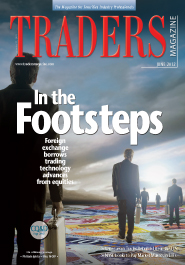
The move to measure FX trading costs by ITG, Abel/Noser and TradingScreen is part of an expansion in the availability of equities-like trading tools and technologies in the FX market over the last decade.
Technological developments in FX trading, in some ways, look like a sequel to what happened first in equities: the rise of ECNs, algorithmic trading, smart order routing and internalized crosses. FX has an element of high-frequency trading, too.
The foreign exchange market is pegged at $4 trillion per day, with spot trading and FX swaps dominating, according to the Bank for International Settlements. Corporate treasurers account for the bulk of all trades, but money managers are a significant customer base, rising along with the expansion of overseas investing in recent years.
Trading by telephone, once the norm, is falling by the wayside, and today, 61 percent of all trading in foreign exchange is done electronically, according to Greenwich Associates. That’s up from 57 percent the previous year.
To some extent, the recent ramp-up in self-trading has been driven by the big brokers that pioneered electronic trading in equities. Today they offer algorithmic trading tools for FX. In 2006, for instance, the brain trust of Credit Suisse’s electronic trading group, AES, concluded that the market structure in FX looked very much like the equities market did before the onslaught of electronic trading there, said Paul Buckley, a director at Credit Suisse’s AES FX. First, there were multiple liquidity sources, like ECNs and single bank feeds. That, combined with clients’ appetite for electronic trading and the growing importance of transaction-cost analysis, meant that the time looked ripe to introduce FX algorithms.
"We started to spread the word that clients could use these tools to take their destiny into their own hands and take control and work that order, or use these technologies to transfer risk instantly, so you have a full range of options," Buckley said. "It really resonated with the buyside. They said, ‘Wow, I can work my own orders. I’m comfortable taking short-duration risk. I think I can improve the outcome for my investors.’"
Money managers have choices when trading currencies electronically. First, they can trade on a fully disclosed basis with a bank with which they have a relationship-essentially a principal trade in which the bank acts as a dealer. Clients can receive a direct feed with pricing from banks, with either streaming pricing or requests for quote abilities. They can also access their providers through a multi-bank platform-one connection gets them to everyone.
Clients can also trade anonymously through an ECN, using their FX prime broker. The advent of the FX prime broker is the single largest catalyst for the rise of electronic FX self-trading. This brings equities-like capabilities to the FX market. Since each trade is a credit trade, clients need someone to enter the market on their behalf. In an anonymous trade, the dealer never knows who is behind the client.
There’s always the phone, too, but that is becoming less important and is said to constitute about 10 percent of the total business, used primarily for the least liquid currencies.
Dealers Dominate
Despite the rise of such ECNs as Hotspot FX and Lava FX a decade ago, the foreign exchange market is still a dealer market and will be for some time. The top 10 dealers (all banks) control nearly 80 percent of the $4 trillion of notional value traded each day, according to a Euromoney FX survey. The share of ECNs is a much smaller but growing presence, and has been around for a decade. Banks also trade on ECNs, as do high-frequency traders.
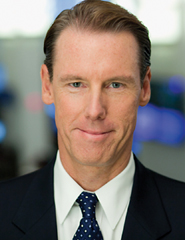
"Banks are huge," said John Miesner, global head of sales for Hotspot FX, an anonymous ECN and subsidiary of Knight Capital. "They have always been and will continue to play an instrumental role in foreign exchange. They have to be around."
Dealer internalization of orders is said to be a major reason dealers are in the catbird seat. It’s about 80 percent of the FX flow, according to industry sources. Investors like this for several reasons. First, there is no ECN fee. Second, there is less potential for market impact compared with the public market-if a buyer lifts the offering, the market moves higher. Lastly, with resting orders, there is the possibility for price improvement with a midpoint match, which cuts execution costs in half.
Equity pros, however, might be surprised to learn that firm quotes aren’t the norm, though some ECNs do provide them. Some have likened a quote from an FX dealer to an indication of interest, or a willingness to trade. Others have compared them to flash orders. One trading executive involved in FX likened an FX quote to SelectNet, the long-gone order-delivery mechanism on Nasdaq. SelectNet didn’t obligate a dealer to trade off his quote and be firm. "FX is a world of flash orders and SelectNet," the executive said. This function is often referred to as a "last look."
Despite equities-like products in the market, FX dealers are expected to hold the keys to the marketplace for some time. First, there is no regulatory mandate to make changes to the market structure, as happened in equities in the 1990s. In the middle part of that decade, Nasdaq and its dealers settled collusion charges with regulators that led to the order-handling rules and Reg ATS. The two rules, respectively, forced dealers to post their best-priced limit orders and allowed the creation of ECNs and other alternative execution venues, like dark pools. FX could never have that problem because it is unregulated. The pressures to change the industry aren’t political, but client-driven. Over time, FX has benefited from some of the technology that came from equities, while keeping its dealer imprimatur on the market.
Catching Up
Mike Harris, director of trading at Campbell & Co., has seen FX trading develop during his 12 years on the buyside. Harris, whose sellside background spanned futures, options and FX, has seen the migration from voice trading to electronic trading-the model his firm favors. Campbell & Co., a commodity trading adviser, manages about $3 billion in futures, currencies and equities. It uses a wide variety of systematic strategies, including trend following, quantitative macro and statistical arbitrage, and relies heavily on technology.
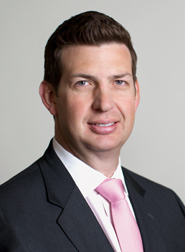
"One of the reasons our firm is considered a leader in technology-based trading is that we began trading equities about 10 years ago, so a lot of what has happened in FX played out earlier-and in many ways, just like the equities markets," Harris said.
Having an equity trading desk provided a road map for Campbell to help strategize how it wanted to trade FX, Harris added. Clearly, FX is behind equities in the electronic trading revolution, he said. "The guys on my equities desk kind of laugh when we’re trying to figure out a problem in currency land, and they’re like, ‘Hey, we solved this 12 years ago. Let me whiteboard this for you.’ Currency trading is one of the last asset classes to go fully electronic."
As soon as the industry began moving away from voice trading, Harris said, ECNs began to dot the landscape. This was around 2000, just a few years after the transition in equities. Investor appetite to trade electronically drove the industry to open up and offer more venues. Clients simply weren’t allowed to trade in the primary interdealer market until access was granted in 2005, after a strong buyside push. The EBS platform, owned by ICAP, and Reuters Matching, have dominated the interdealer market for years and are still widely considered to be the primary market for FX. Banks also allow sponsored access to these systems by money managers and hedge funds.
Multi-Bank Platforms
The original interdealer platforms were the forerunners of today’s multi-bank platforms, and today they compete with these newer entrants. FXall, Currenex, Hotspot FX and Bloomberg are all active in this space. FXall, a publicly traded company originally launched by banks, also has a multi-dealer platform and an ECN, the former Lava FX, which it bought from Citi in 2010.
Currenex, owned by State Street since 2007, has FX Connect and is another popular multi-bank offering. Hotspot FX, owned by Knight Capital for the last six years, is an ECN and was launched in 2000. Bloomberg has a multi-dealer platform, which also offers broker algorithms, while a separate ECN is housed in Bloomberg Tradebook, a broker-dealer.
The advantage of multi-bank systems is that clients see all their prices through one connection. Lenore Kantor, a senior director and head of marketing and communications at FXall, said that her firm’s execution-quality analytics indicate that clients get better prices when they go out to more than one provider. However, she added, there is a diminishing return to this. "If you go out to more than five banks, you’re running the risk of damaging your relationships. Of course, there are many occasions when trading with a single bank is preferable-for example, when collaborating on a large portfolio with emerging markets exposure-and it’s important to take advantage of the most effective trading method to accomplish your specific objectives," she said.
In FX, clients who reduce their business with a bank can expect to see less competitive pricing or flexibility. That could come back to haunt a client when it needs to make a tough trade, particularly if it has fewer banks willing to deal on its behalf.
Conversely, there is a certain level of trading responsiveness clients expect, as well. Industry pros say that when dealers’ or venues’ rejection rates get beyond 15 or 20 percent, they stop getting routed to-just like in equities.
HFTs and ECNs
The FX market is described as very liquid and ultra-competitive, not only among dealers but also in the ECNs, where high-frequency traders compete with banks and hedge funds for the best price. The HFT crowd represents from 20 to 50 percent of the volume, according to sources. The importance of high-frequency traders was evident in September 2008, when traditional market makers pulled out of the FX market after the collapse of Lehman Brothers."The HFTs are vitally important to our marketplace," Hotspot’s Miesner said. "Unfortunately, they get a bad rap, but they were the ones still standing when other market makers pulled out."
Because FX is a dealer market, there is no central market to see the top and depth of the order book, so vendors have worked to create a synthetic National Best Bid and Offer by bringing in various feeds. This is at least giving traditional money managers and hedge funds a view into the market.
The quality of FX execution is a high priority today for money managers. More of them are looking to represent themselves in systems and working their orders. According to Jamie Benincasa, a longtime sales executive at FlexTrade, a trading front-end firm, the buyside is looking to see where it can become more efficient in capturing alpha.
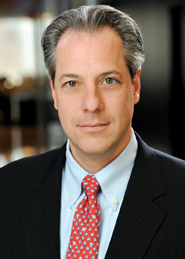
For cross-border trades, one way to do that is to execute the currency hedge in a prudent manner, usually as close to the time of the stock transaction as possible. Suppose a stock that requires an FX hedge trades in the morning. If a trader waits until the afternoon, the FX rates "could have moved significantly" in a few hours, he said. The buyside is aware of this today, and the FX portion of the trade is no longer an afterthought.
"There has been a greater emphasis placed on foreign-exchange executions, so there is a renewed interest in best practices," Benincasa said. "If your stock pickers have great ideas, you want to retain that performance after the FX trade gets done."
Consequently, Gary Stone, chief strategist at Bloomberg Tradebook, reports that traders are watching their FX transactions much more closely and taking greater responsibility for their executions, using electronics for FX when they can. "We’ve seen a lot of investment advisers start to move their FX trading function from the back office to the trading desk," Stone said. "The desire is to have the same tools they’re comfortable with in equities."
Algos Rising
Because there is no tape measuring volume like in equities, FX is different when it comes to algorithmic trading. Beyond simple iceberg orders and time-sliced orders, such as TWAP, it is difficult to come up with FX algos that function like equities algos. While a VWAP algo for FX is hard to develop, there are still algos out there for FX traders.
The multi-bank platforms offer their own algos, and so do execution management systems. Bloomberg also offers access to seven broker FX algorithms. The beauty of FX algorithms is that even though they may be less scientific in their approach than in equities, they still allow a sweep function across the market, as some of these systems put together a synthetic NBBO equivalent from the various liquidity providers.
Credit Suisse’s Buckley expects there will be wider adoption of FX algos among money managers after the current first wave of early adopters-mostly big institutions and hedge funds. "That is the story for the next two or three years: a further build-out," he said. But he doesn’t know how deeply algo trading will ultimately penetrate in FX, or whether it will get to the level it has with equities.
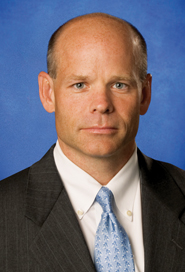
Franklin Templeton has "dabbled" with FX algorithms in the past and plans to try them again for the larger, more liquid currency pairs, said Mat Gulley, director of global trading at the firm, which manages $726 billion. To date, the global money manager has preferred to use brokers because of the complexities on the back end of its trades and the unclear nature of the electronic marketplace.
"If a firm does a lot of cross currencies, there is too much work involved to do it electronically, so it is more economical to do it through a broker," Gulley said.
In general, Gulley said he’s encouraged but uncertain about the future of electronic FX trading. He cited recent positives like greater use of TCA and algorithms. Right now, it is easy to electronically trade liquid currency pairs in small size. "But for the more complex and challenging trades-to trade less-liquid pairs and in size-I think the industry is still trying to find how to appropriately access the few liquidity pools in order to do it electronically and efficiently."
Gulley is not as optimistic that FX can evolve as fast as equities into an efficient electronic system. "I just do not see the value proposition of using algos in a marketplace dominated by just a few players who control their own liquidity, without any institutionalized ECNs and in which institutional liquidity pools connect through an interdealer market system. Outside of operational efficiencies, we are still trying to understand how to capture the execution value-add through technology."
But he agrees the equities electronic trading model is influencing FX. "I think it will evolve. I don’t see why it shouldn’t. It is headed that way, to some extent. All asset classes are heading in the way that equities pioneered."





